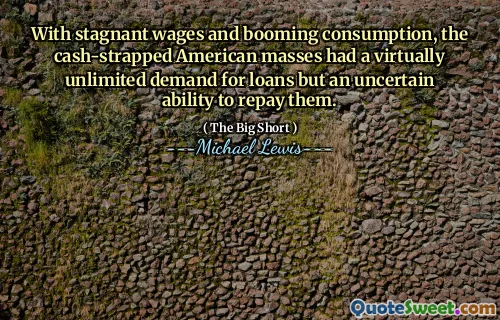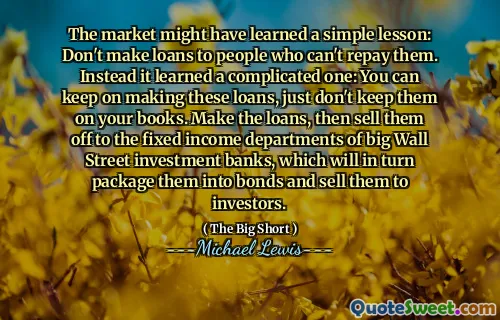
Subprime mortgage lending was still a trivial fraction of the U.S. credit markets-a few tens of billions in loans each year-but its existence made sense, even to Steve Eisman. I thought it was partly a response to growing income inequality, he said. The distribution of income in this country was skewed and becoming more skewed, and the result was that you have more subprime customers.
Subprime mortgage lending, although a small component of the U.S. credit markets, was driven by significant social factors, according to Steve Eisman. He recognized that this type of lending reflected the increasing income inequality in the country, which was becoming more pronounced. This skewed income distribution resulted in a rise in subprime borrowers who needed loans despite their higher risk.
Eisman's insights suggest that the existence of subprime lending wasn't purely a financial phenomenon but also a response to broader economic changes. As more people faced financial challenges due to inequality, the market adapted by offering mortgage products to those who might not have qualified under traditional lending criteria.











